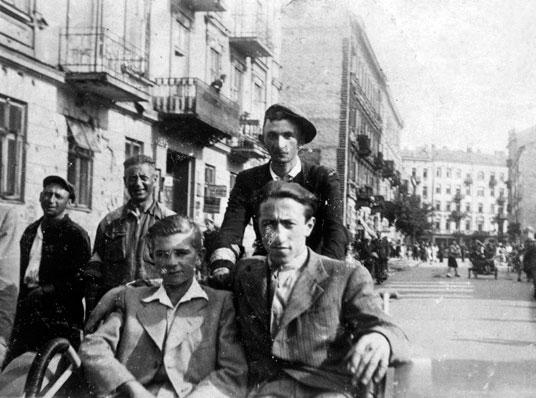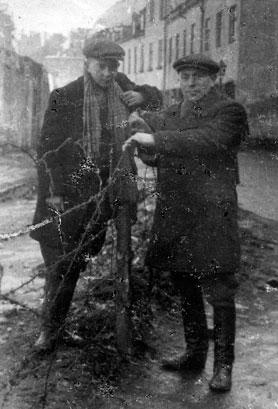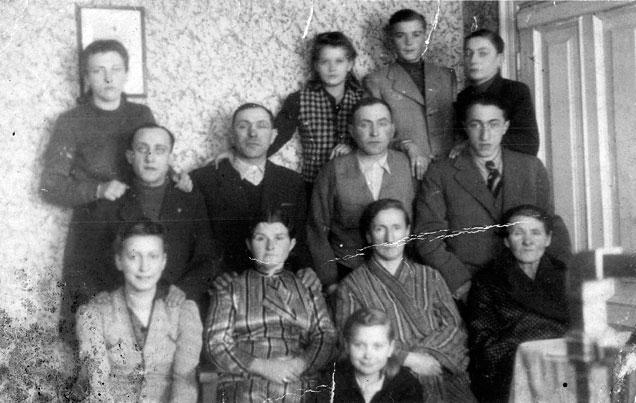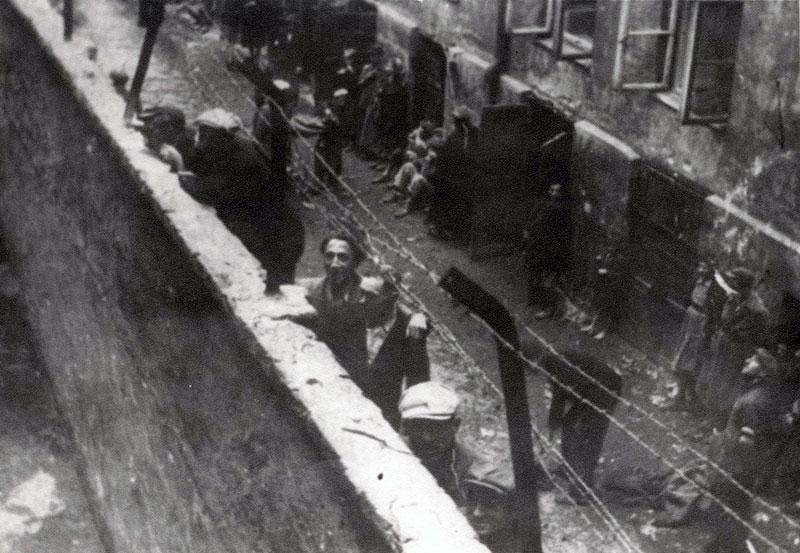







Sunday to Thursday: 09:00-17:00
Fridays and Holiday eves: 09:00-14:00
Yad Vashem is closed on Saturdays and all Jewish Holidays.
Entrance to the Holocaust History Museum is not permitted for children under the age of 10. Babies in strollers or carriers will not be permitted to enter.








Wladyslawa Kostanska lived in Warsaw with her son Jan and her two daughters. In 1940 they moved to an apartment building where they formed a deep friendship with a Jewish family by the name of Wierzbicki. When the ghetto was created, the apartment house was divided into two parts by the wall that was drawn through the city and that was to separate Jews from non-Jews: the part where the Kostanski's lived in was in the part outside the ghetto, with the wall running through the courtyard, leaving the wing where the Wierzbickis lived within the ghetto walls.
When the ghetto was sealed in November 1940, 15-year-old Jan, helped by his mother, began smuggling food into the ghetto. The very meager food rations allocated by the Germans to the ghetto condemned its inhabitants to starvation. Survival depended on the ability to supplement the official provisions by smuggled goods. Jan and Wladyslawa's smuggling activities constituted a lifeline for the incarcerated Jews.
Jan's help was not limited only to his smuggling activities. Despite the walls that now separated them, he also took great pains to continue his contacts with the Wierzbickis. Unlike others who passed by the ghetto and remained unmindful of the fate of those who had been locked behind the walls, Jan kept up his friendship with his neighbors. This was not without danger, and in 1941, Jan was arrested inside the ghetto. The Jews in his company were executed, and he was interrogated and beaten for five days, only to be released thanks to a bribe paid by his mother.
When the deportations from Warsaw began in the summer of 1942, Jan managed to enter the ghetto and smuggled Aizik Wierzbicki and his children Noach and Necha out to safety. The threesome found shelter in an apartment belonging to Wladyslawa’s brother, who was in prison at that time. After four weeks, they were taken out of Warsaw to a friend of Wladyslawa’s. Then, they went to the Otwock ghetto, which at the time seemed safer than the Warsaw ghetto. When the roundups in Otwock began, the family was caught, but managed to escape and return to Warsaw. Since the deportations from Warsaw had temporarily stopped, they returned to the ghetto while Wladyslawa was searching for a new apartment, where she could hide her friends. In March 1943, Jan took them out of the ghetto and brought them to the new place, where a hideout had been prepared. They also took in another Jewish family friend, Walter Cykiert. One month later the Germans proceeded to liquidate the Warsaw ghetto and the uprising broke out. For six weeks the Wierzbickis, Cykiert and their protectors watched the suppression of the revolt, as one house after the other were torched down and the remaining Jews were taken away.
Wladyslawa and her children continued to take care of the hiding Jews, shouldering the burden of feeding the extended family despite the war shortages. They continued to protect their wards during the Polish uprising in late summer 1944. After the suppression of the resurrection in October 1944 all Warsaw residents were ordered to leave the city. Jan decided to stay in the hideout along with the Jews. Together they awaited liberation, which came on January 17, 1945.
After the war, Wladyslawa married Aizik Wierzbicki and Jan married Necha Wierzbicka. In time, they all settled in Australia.
On February 10, 1983, Yad Vashem recognized Wladyslawa Wierzbicka-Kostanska and her son, Jan Kostanski, as Righteous Among the Nations.

Thank you for registering to receive information from Yad Vashem.
You will receive periodic updates regarding recent events, publications and new initiatives.

"The work of Yad Vashem is critical and necessary to remind the world of the consequences of hate"
Paul Daly
#GivingTuesday
Donate to Educate Against Hate


Worldwide antisemitism is on the rise.
At Yad Vashem, we strive to make the world a better place by combating antisemitism through teacher training, international lectures and workshops and online courses.
We need you to partner with us in this vital mission to #EducateAgainstHate
The good news:
The Yad Vashem website had recently undergone a major upgrade!
The less good news:
The page you are looking for has apparently been moved.
We are therefore redirecting you to what we hope will be a useful landing page.
For any questions/clarifications/problems, please contact: webmaster@yadvashem.org.il
Press the X button to continue



